Pearson Off Grid review
City riding in the week and wilderness on the weekend - the Off Grid claims to do it all
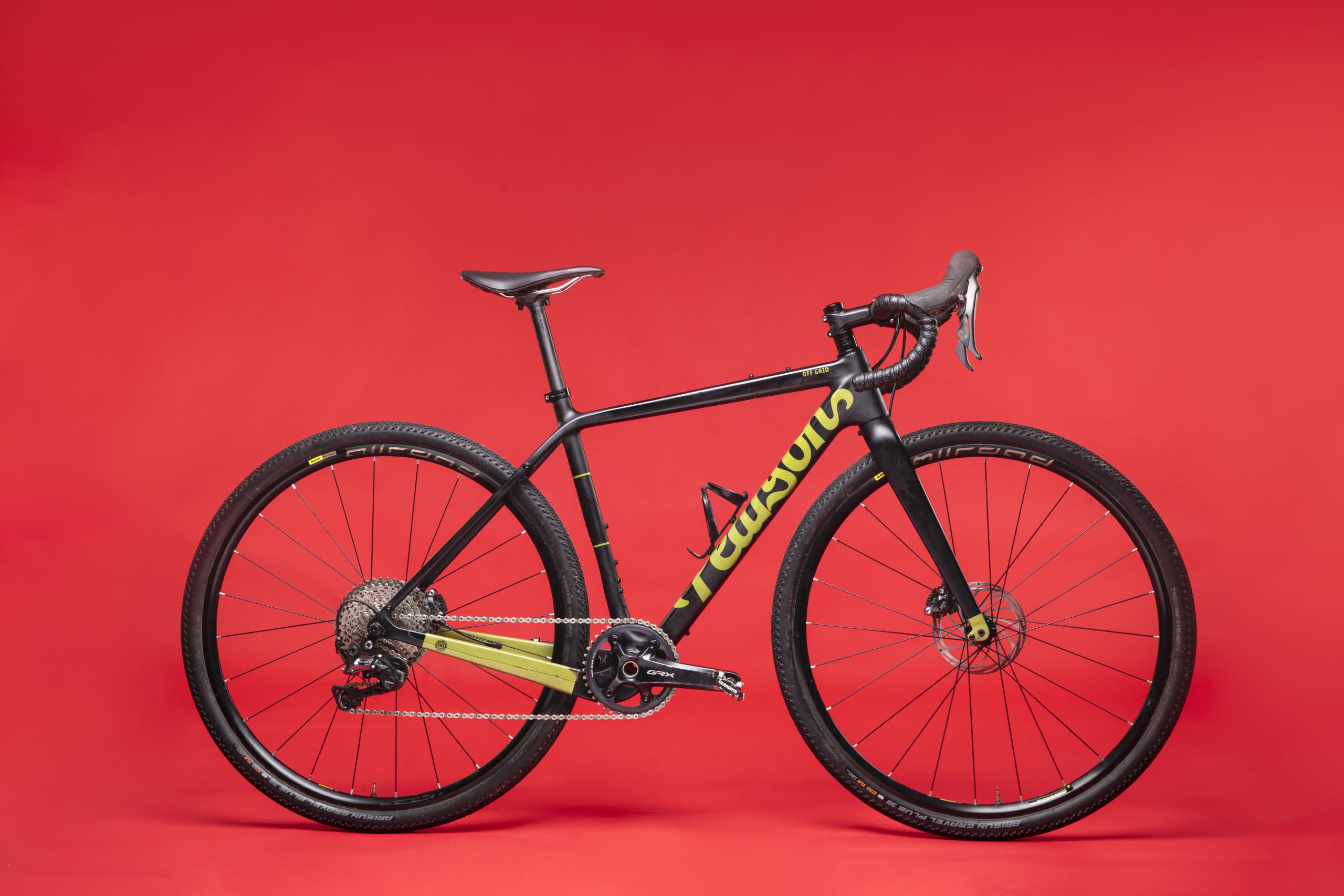
I can credit the Off Grid with many hugely enjoyable days on the bike - it became my machine of choice during the latter half of 2020 and it's put many a smile upon my face. This truly is a versatile bike. Its weight surprised me - it accelerates and responds like a much lighter bike, but I can't ignore the fact that there are bikes of similar heft available at a lower price point. However, with Pearson you will enjoy the benefits of one-to-one advice, the ability to spec your own components and expert fit analysis.
-
+
Extremely versatile
-
+
Rides well on the road
-
+
Choice of spec and promise of bike fit
-
-
Spec could be more rugged
-
-
A little heavy
You can trust Cycling Weekly.

Of bicycle genres, the 'gravel bike' remains refreshingly adaptive. Where endurance bikes share similar geometries, as do race bikes and aero bikes, these mixed terrain machines are yet to gain a set of personality characteristics to accompany the pigeonhole – so are often best considered on a sliding scale.
>>> See more: Pearson Off Grid at Pearson from £2,900 to £5,000
With road bikes on the left and mountain bikes on the right, I'd place the Pearson Off Grid centre-left. The Tony Blair of bikes, maybe, if we're to bring politics into it (writer immediately ducks incoming heckles).
Pearson calls this its "most versatile adventure bike yet." I met one half of the Pearson brother duo, Will, for a (pre-lockdown) ride when I picked it up, during which he took me on a tour of the bike's ideal terrain: canal paths, a few muddy trails with a little bit of road. Since then, I've taken it on some almost exclusively road rides as well as tackling the mountain bike trails around Holmbury Hill and my own claggy stomping ground.
Pearson Off Grid frame
Pearson has opted for a carbon frame and fork, with a carbon seatpost and aluminium bar and stem. As per all of its bikes, each frame can be built from scratch to a rider's specification, though there are stock builds available. I've got a build similar to the £3,100 model with Shimano GRX 800.
The brand designs the geometry for its own aluminium frames in house, but at the moment all of the carbon frames come from open moulds. This is no slight on the brand, it's not uncommon, and with its in-house physio guided fitting services as well as custom builds, Pearson takes pride in offering a unique touch via optimum fit and componentry over proprietary tech.

The frame geometry sits comfortably close to that of an endurance road bike: on my size XS the head angle is 70.5°, but this increases to 71° in larger sizes. The 1,018mm wheelbase keeps things long for a stable turning circle whilst relatively short chainstays at 435mm help keep the rider weight over the front of the bike on short, scrambling climbs.
Moving between this and my longtermer test machine, the Basso Diamante road race frame, the difference was, of course, huge. The Off Grid has a stack of 545mm and reach of 369mm. Since I was largely sticking to off-road riding, I kept spacers below the stem – so I had a very heads up position. Had I removed these and gone longer at the front I could have found a more aggressive fit were it my goal to get a bit more aero.
There's five frame sizes available, but at 166cm/5ft 4in I found a good fit on the XS – and there's plentiful stack to play with, whilst the traditional two-piece front end means stem changes are simple. The range is wider than the three only of the Kinesis G2 I tested last year. It's not always possible for smaller brands to offer the same spread as the big guns within a reasonable price range.
Pearson has opted for a dropped chainstay to offer extra tyre clearance, at 42c with a 700 wheel or 55c on a 650b.
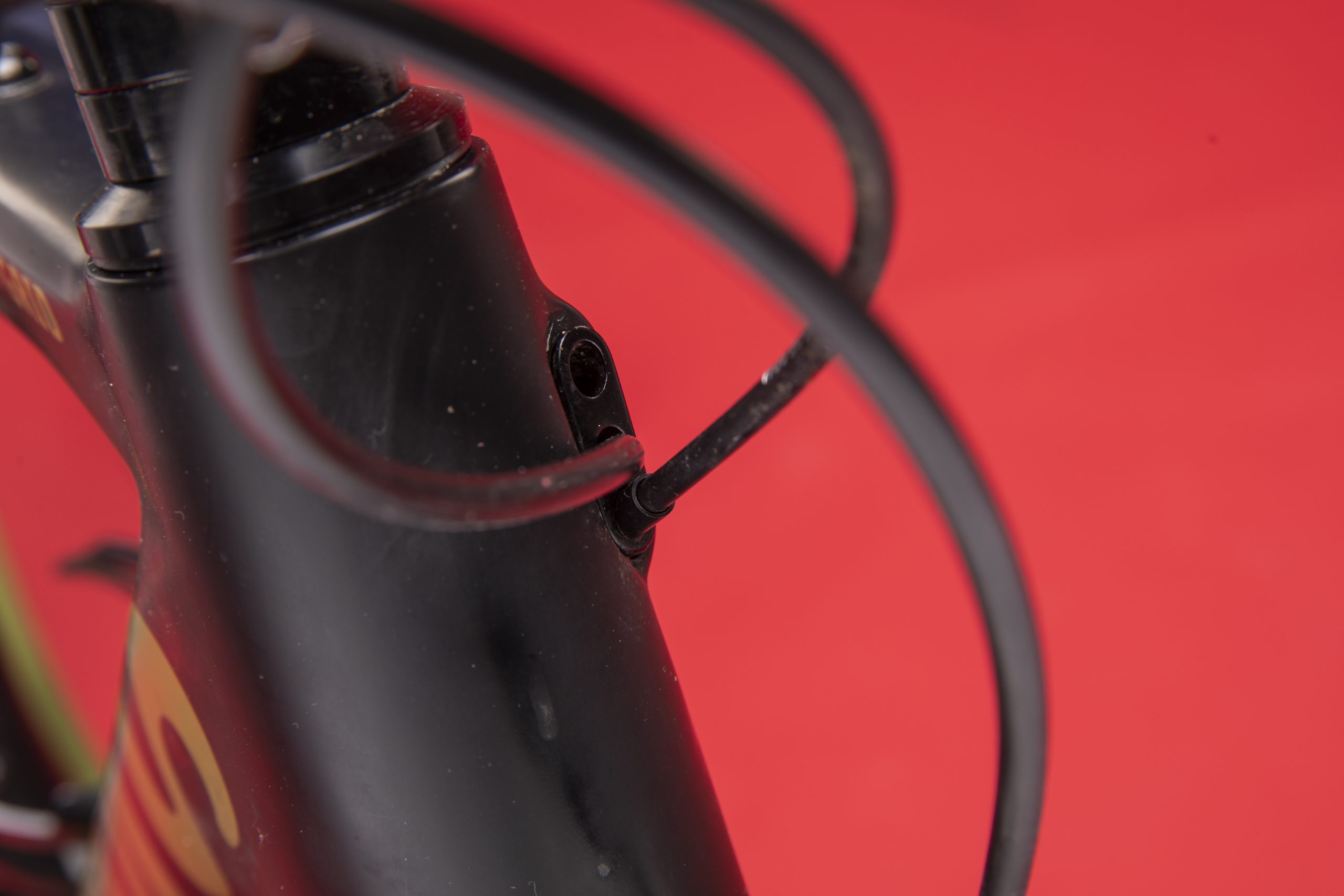
Cable routing is internal, with ports in the headtube carrying the cables into the frame, via an aluminium plate which prevents them from knocking together and rattling. This is not something I've seen before and offers a neat solution. After months of very muddy, wet riding the shifting is still on point. Di2 cable routing is built in and there's a mount for a front mech should you feel the need.
Pearson Off Grid groupset
Pearson has specced this bike out with many of its in-house components, which carry with them the brand's unique naming structures. There's the 'To the Bar' stem, 'Round the Bend' bars – both aluminium – dressed in 'Hold Tight' gel tape. At the rear end is a 'Bolt Upright' 5mm offset (so, arguably not bolt upright!) carbon seatpost.
The bars on my bike were notably narrower than on many gravel bikes I've tested. Usually, I'm a fan of narrow bars, and these felt excellent on the road, but if I was speccing for myself I'd choose something with a flare for off-road trails, providing more confidence on the techy terrain.
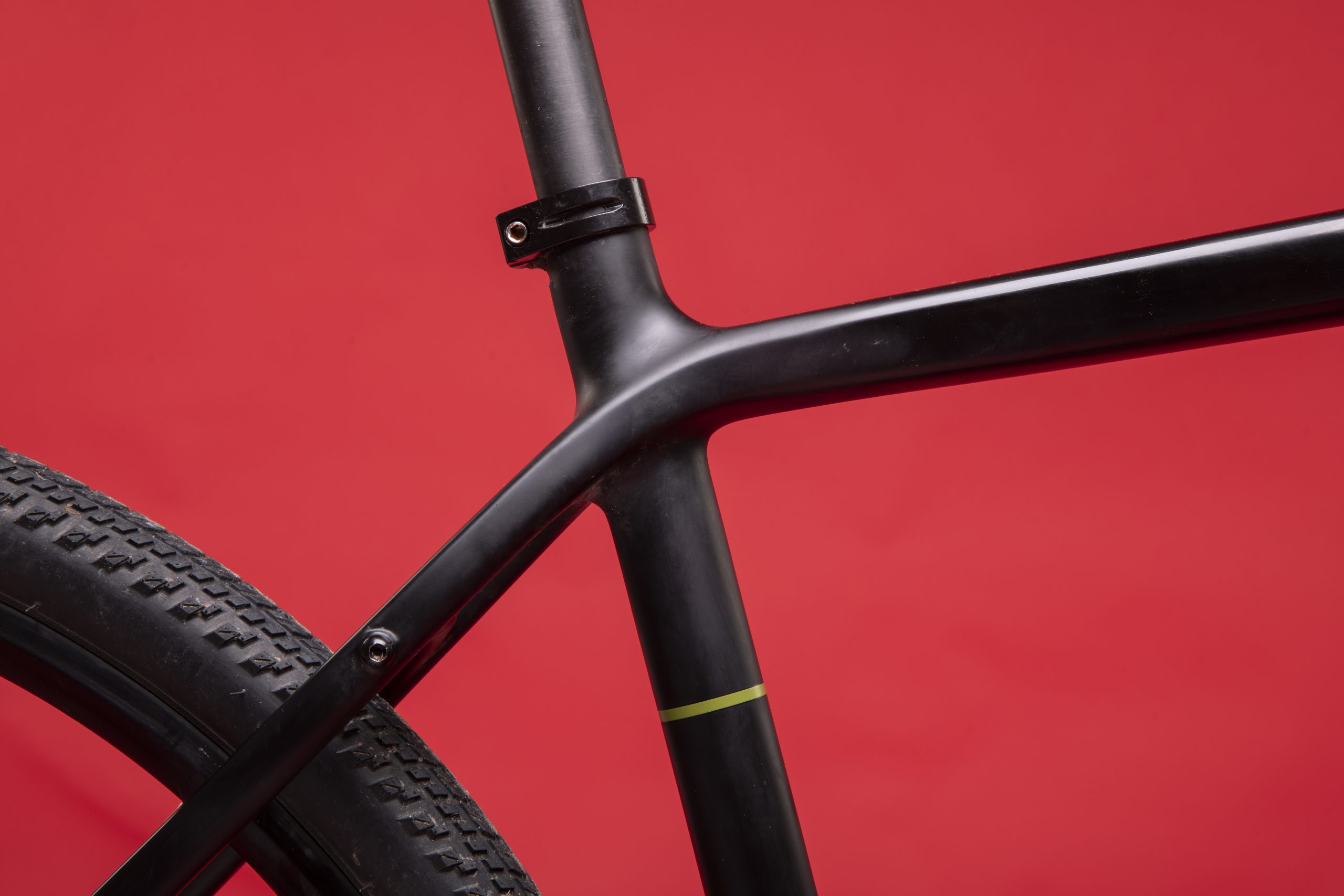
The carbon seatpost will absolutely drop the weight and add some plush ride quality, something that was on offer in abundance.
Pearson is a big believer in 1x being the future and this model comes with a GRX grouset, with a 40t front chainring and 11-42 cassette. Having just jumped off the 2x Liv Devote with its electronic shifting, I thought I might miss my extra gear options, but this proved not to be the case. Even on the road, the range was plentiful for the relaxed rides this bike suits. Of course, I'd want closer spacing and more resistance if I were to join a club chaingang at speed, but that's not what this bike is built for.
This was my first time using Shimano's ergonomic GRX shifters, and needless to say they were excellent – but there's enough written of them elsewhere. The clutch rear mech was a shining glory, and having ridden a Shimano Tiagra gravel bike recently I can confirm that the difference in chain slap reduction is massive.
My build came with Mavic Allroad rims, Mavic hubs and 38c Arisun Gravel plus tyres. The latter is best suited to dry weather, or land that drains well if riding in winter, and most riders would need to swap these if looking to ride through winter slop.
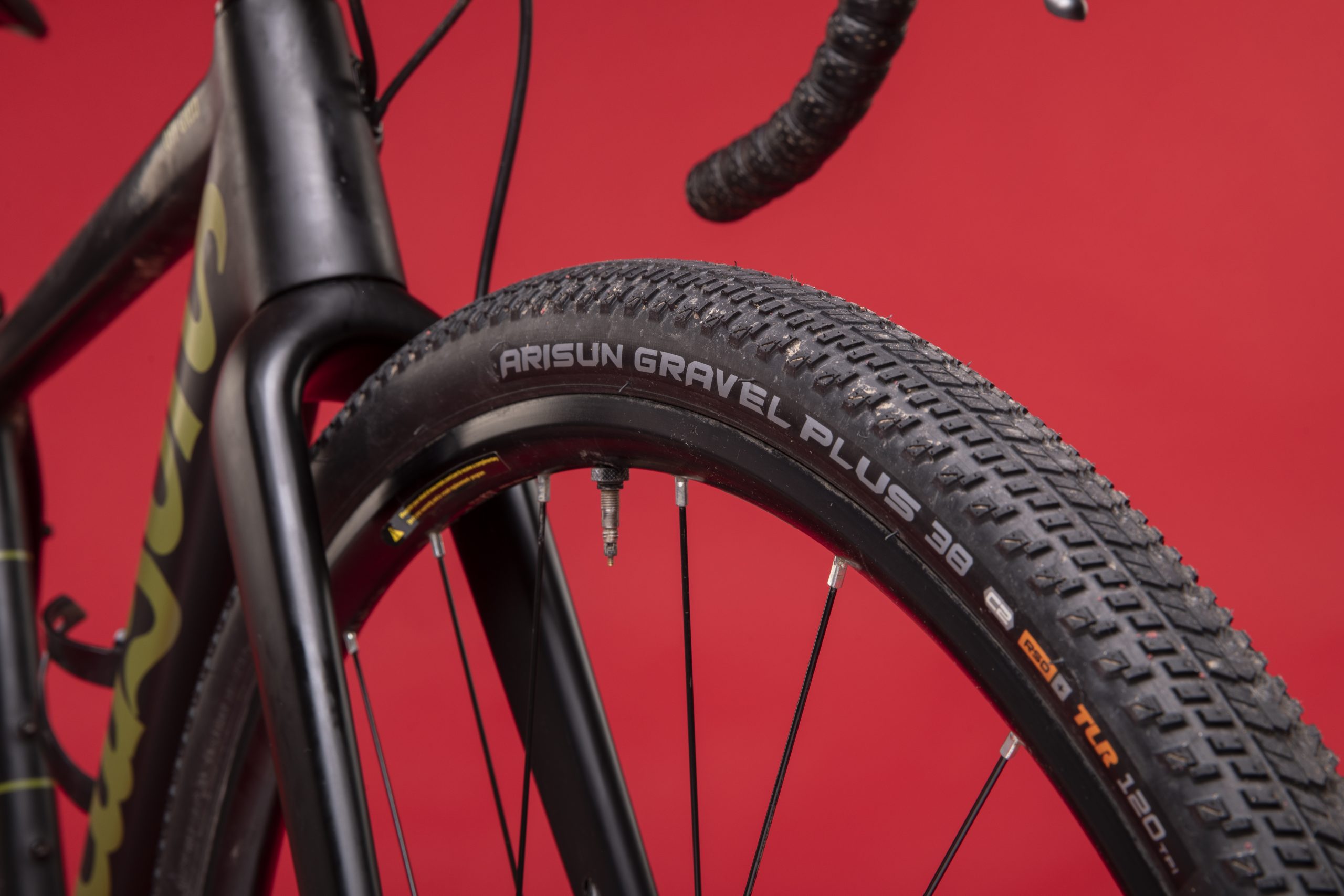
There's all the standard rack and mudguard mounts as well as mounts for a top tube bag, too.
The full build (wearing 38mm tyres) initially came in at 9.4kg. This overall weight came as a surprise – so much so that I double-checked by using two sets of Park Tool scales. Since Pearson built the bike for a sportive event, the brand said it used a little extra sealant - I re-set the tyres with a Cycling Weekly approved volume of gloop and got 9.38kg.
This build doesn't weigh that much less than the Kinesis G2 I tested last year, which with an aluminum frame came in at 9.7kg for £1,600. The G2 used inner tubes, so that would account for some of the weight difference. However, the Off-Grid is also notably heavier than the Liv Devote - which was tubeless, albeit a higher-end but 2x Force build, at 8.1kg for £4,699. I didn't personally test the Cannondale Topstone, but our last review of an Ultegra build at £3,499 weighed 8.46kg in a size large and the Fustle Causeway at £2,513 was 9.46kg in a Medium/Large also.
Build quality
Pearson builds all of its bikes in-house, and it is working on the ability to drop bikes directly to the customer's door. In this case, it's crucial to remember that the Covid crisis led to a huge increase in demand, which meant bike shops working double quick time to meet the needs of customers.
However, I did encounter two issues with the build. Firstly, there was a gap between the top of the head tube and first spacer. After a bit of tinkering I discovered that this was caused by the use of three small metal spacers, instead of the required one.
In addition, after a good few weeks of very muddy riding, I noticed that the cranks where not spinning as freely as they should. Removing the crankset, regreasing and refitting it solved this. Neither of these issues are problems with the bike itself, and I believe they were the result of a culmination of factors which created a very busy time for the bike industry – but since the build is part of the service, it couldn't be overlooked.
Pearson Off Grid ride
Over the last two months, I've ridden the Off Grid over some extremely questionable terrain and subjected it to boggy conditions which are unlikely to have been the intended use. The Christmas break proved to be a particularly thorough test, with nearly all of my riding being off-road, and most of it through deep mud – seemingly made up of 80 per cent slip 'n' slide clay.
The frame provided a comfortable riding position, which felt relaxed on the road and offered enough stability off-road. Some gravel, adventure and cyclocross bikes can feel a little muted when out of their muddy ideal – not so here. With a tyre swap I can see the Off Grid performing just as well as any endurance road bike. It felt direct and quick enough to respond to out-the-saddle efforts on the road, with the more relaxed handling suiting wet and greasy tarmac.
This is perhaps why the weight of the bike – 9.38kg – came as a huge surprise to me when I finally plonked it on the scales ahead of collecting my thoughts for this review. For a bike at this price point, the Off Grid is a little bit portly, but it must carry its weight well because it didn't feel sluggish on the climbs or slow to accelerate. It is worth noting that gravel bikes, with wide tyres and tubeless set ups, won't compare well in weight against road bikes - but in this case we're comparing against bikes in its class.
Off-road, the tyre clearance was thoroughly tested and despite some claggy three-hour rides, never once presented an issue. I notice I've managed to scuff one crank arm, but never felt myself hit a rock or root and I felt stable when hitting the trails.
When it comes to the spec, if I was choosing my components myself, I'd go for something a bit gnarlier. Flared bars provide more stability, which is confidence inspiring for anyone with less experience off-road.
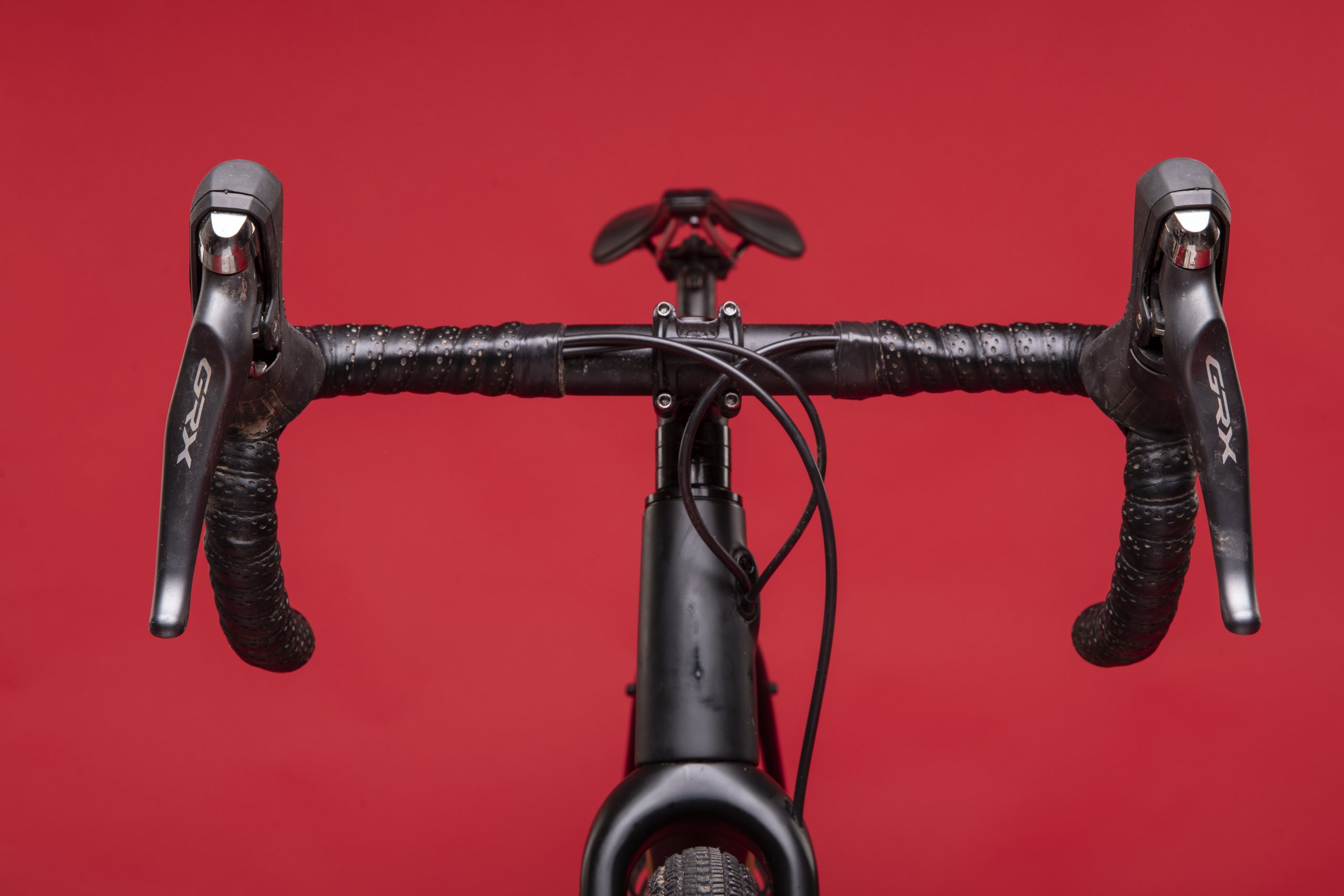
Tyre choice is a tough one for brands, as 'gravel' has a very different definition depending upon who you ask. In this case, Pearson has chosen a middle-of-the road option, which I found performed excellently on dry trails, and rolled well on the road, but wasn't at all suited to wet mud. That's no surprise, and those looking to hit the trails after extended periods of rain are going to want to splash out on a more dedicated tyre.
Will Pearson describes the Off Grid as the "answer to those who yearn for one bike to do it all (despite them already having a road and a folding bike anyway)," adding: "It’s versatile enough to ride through the streets one day and then into the wilds, kitted out with adventure bags and coffee flask, the next."
>>> See more: Pearson Off Grid at Pearson from £2,900 to £5,000
There, I think he hits the nail on the head. If you're looking for one bike to perform all duties – on and off-road – the Off Grid is versatile enough to tick your boxes. As a fairly new convert to 'van life' holidays, I hope that in the not-too-distant future once travel restrictions are lifted I'll be faced with the decision of what bike to take on holiday – road or mountain? – and I reckon the Off Grid would be a very sensible compromise.

Thank you for reading 20 articles this month* Join now for unlimited access
Enjoy your first month for just £1 / $1 / €1
*Read 5 free articles per month without a subscription

Join now for unlimited access
Try first month for just £1 / $1 / €1
Get The Leadout Newsletter
The latest race content, interviews, features, reviews and expert buying guides, direct to your inbox!
Michelle Arthurs-Brennan the Editor of Cycling Weekly website. An NCTJ qualified traditional journalist by trade, Michelle began her career working for local newspapers. She's worked within the cycling industry since 2012, and joined the Cycling Weekly team in 2017, having previously been Editor at Total Women's Cycling. Prior to welcoming her first daughter in 2022, Michelle raced on the road, track, and in time trials, and still rides as much as she can - albeit a fair proportion indoors, for now.
Michelle is on maternity leave from April 2025 until spring 2026.
-
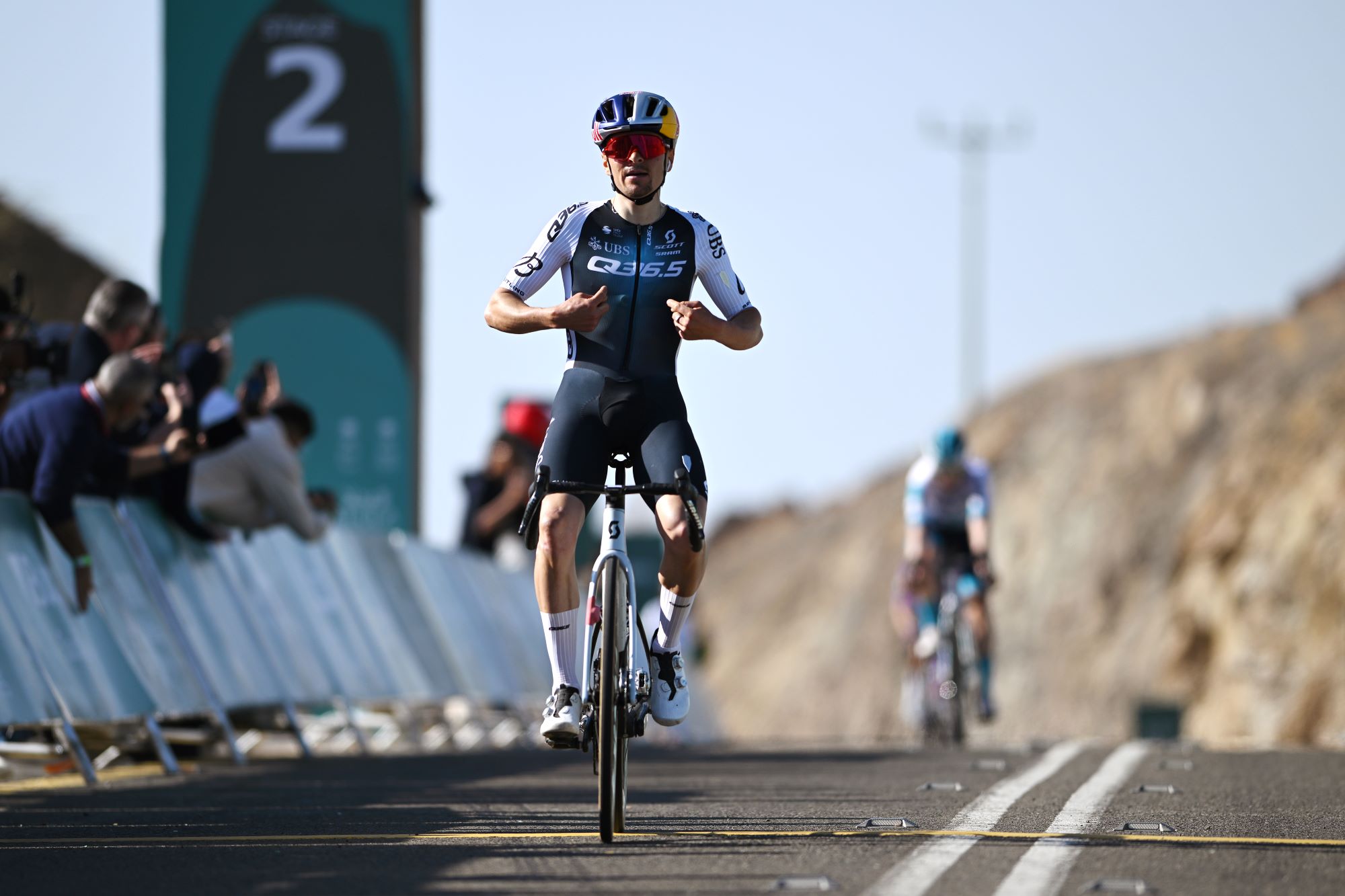 What does Q36.5 mean? We asked the people behind the Italian kit brand that sponsors Tom Pidcock's team
What does Q36.5 mean? We asked the people behind the Italian kit brand that sponsors Tom Pidcock's teamQ36.5's Luigi Bergamo and Lodovico Pignatti Morano take on Cycling Weekly's Q&A
By Tom Thewlis Published
-
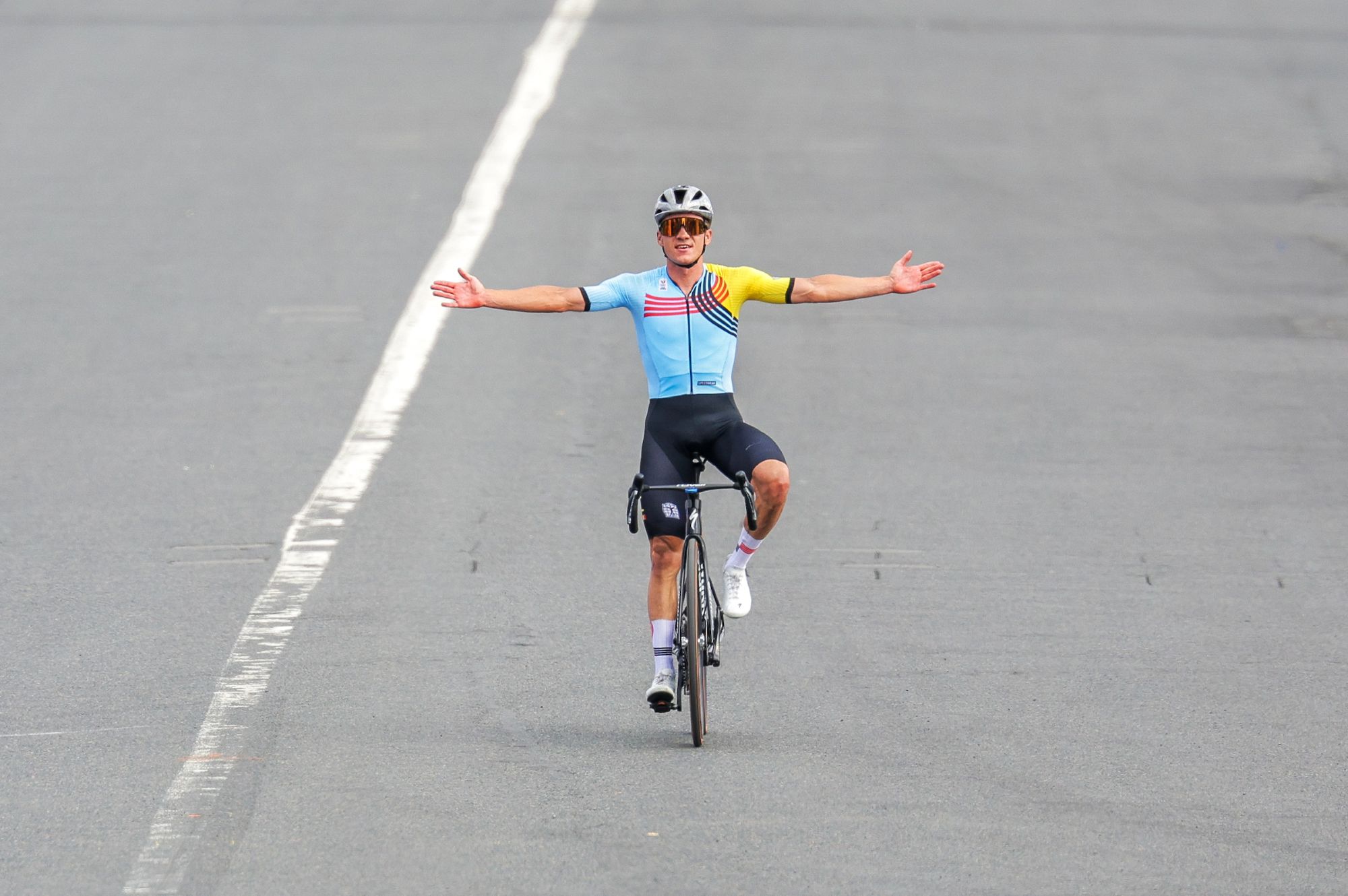 'If I were a tennis player then my career would be over': Remco Evenepoel contemplated early retirement after serious training accident
'If I were a tennis player then my career would be over': Remco Evenepoel contemplated early retirement after serious training accidentDouble Olympic champion was left with nerve damage and says his shoulder is not yet fully healed ahead of his return to racing at Brabantse Pijl
By Tom Thewlis Published
-
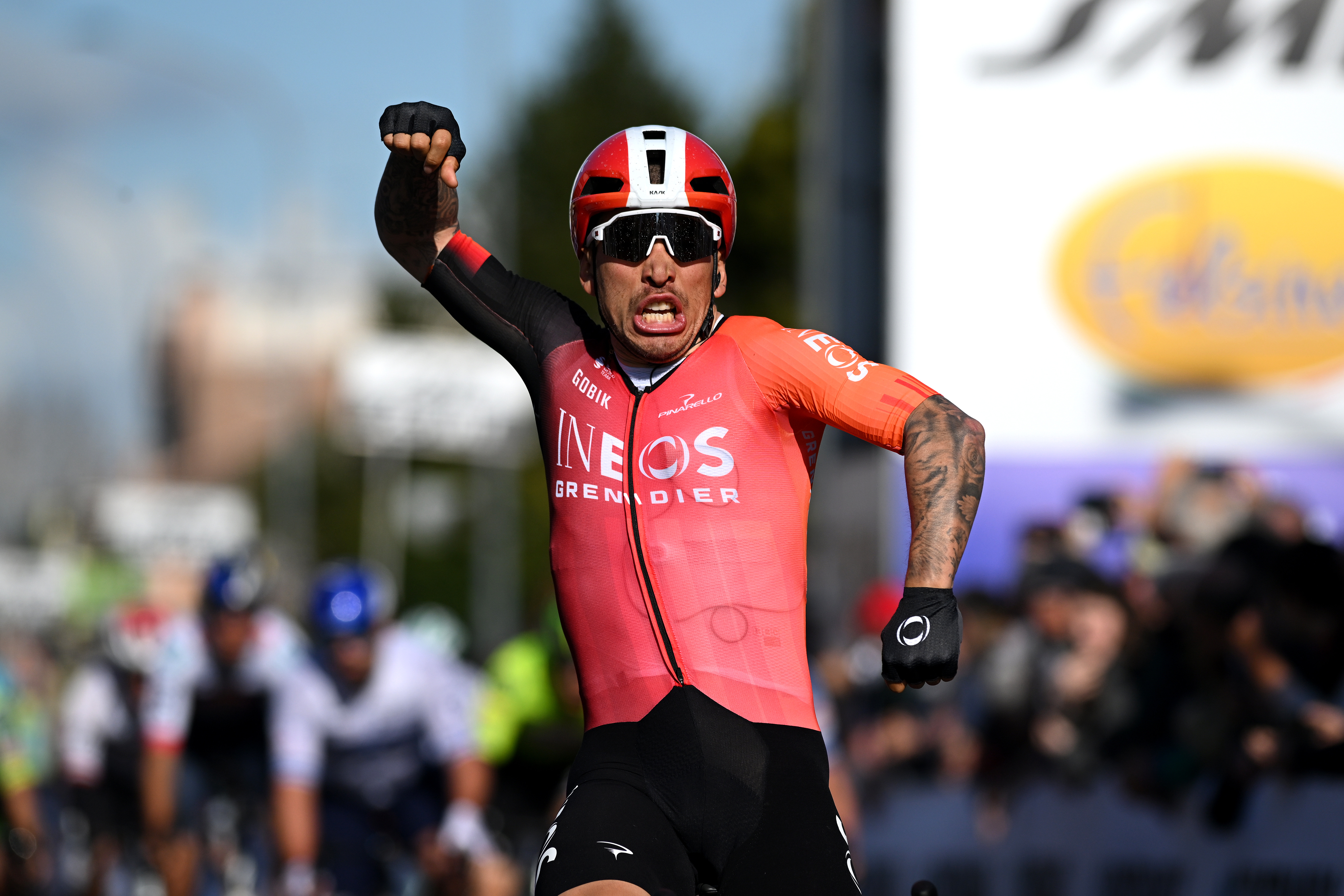 'It can really push me along' - How a velodrome comeback is making Caleb Ewan faster on the road
'It can really push me along' - How a velodrome comeback is making Caleb Ewan faster on the roadAustralian says he'll "definitely" continue track work after rekindling passion
By Tom Davidson Published